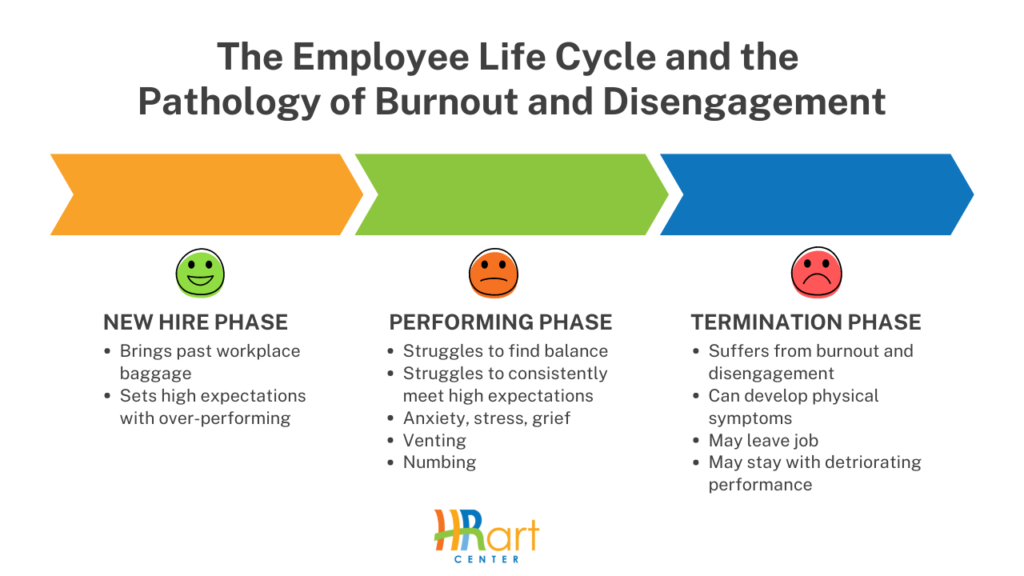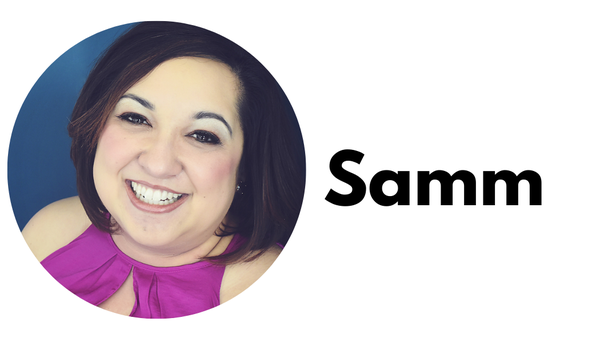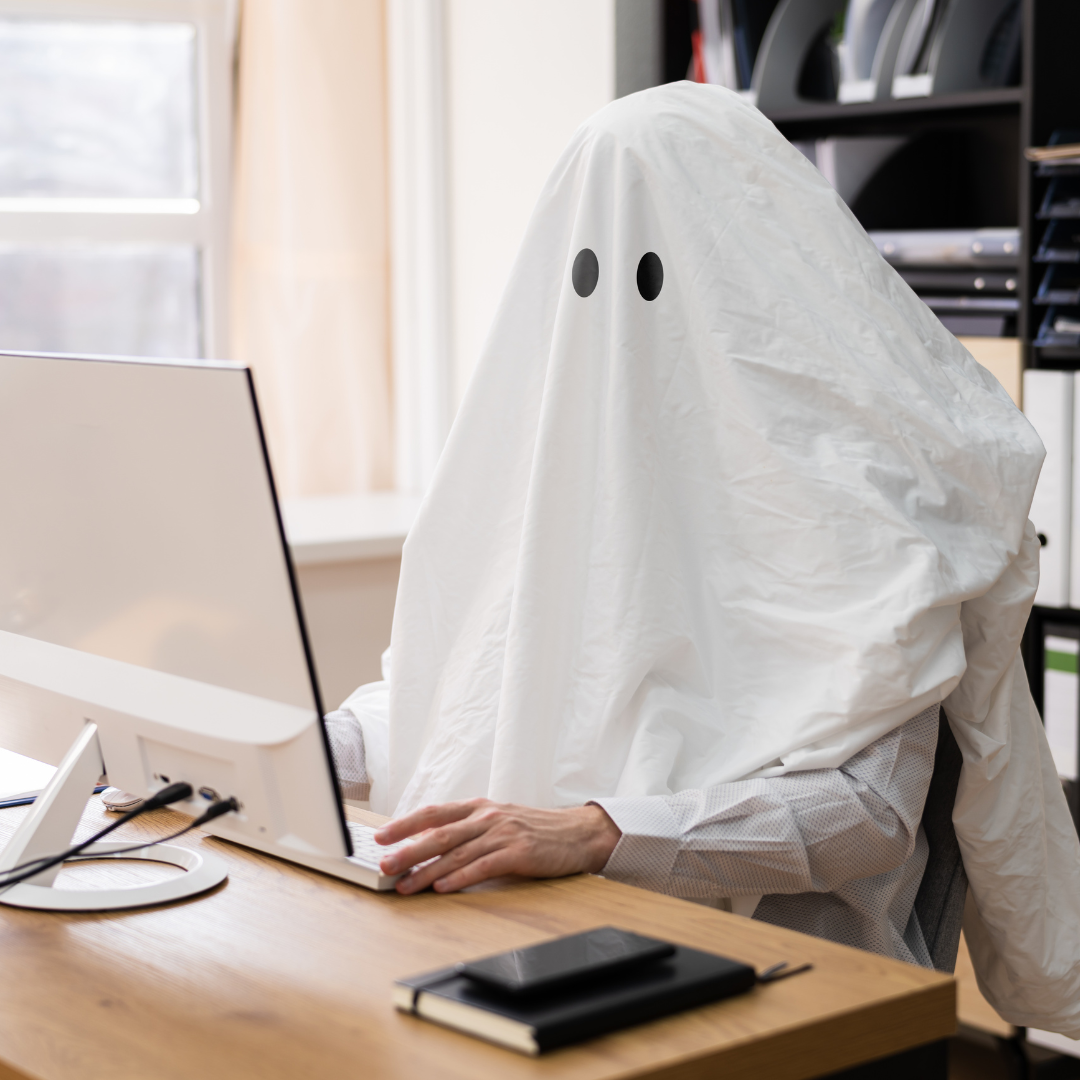Dear HRart Worker,
I write to you as I once again find myself struggling to find balance; my immune system is so easily compromised after the years of heavy abuse from overwork and lack of self-care. It’s a bit ironic now looking back knowing that I once believed self-care was for the weak. Little did I know at the time that my negligence was actually making me physically and emotionally weak.
I also try to look at the brighter side of this entire situation with the coinciding times of a global pandemic that keeps evolving. It’s as though the perfect storm was delivered so I could conduct my research quickly using myself as the guinea pig. I share this because the one thing I have learned for certain since beginning this work is that I am not alone. My story is not unique, it is one of many, and collectively we are suffering as a result of what was ingrained in us as a way of life to live and work.
Today I want to talk about the pathology of burnout and disengagement. As I have continued my research, I am coming to believe that these two concepts are closely connected if not one in the same. In fact, what I believe these terms actually classify are the stages of distress our bodies are actively experiencing. What is even more disturbing is how these stages simultaneously progress and almost match up with the stages of the employment cycle.
For a long time the idea has been encouraged for us to limit the effects of work by finding balance between life at work and outside of work. The truth is that for many of us that love what we do, we live in an indefinite gray. This makes this balance concept impossible and almost an outlandish request. Instead, what I believe we must do is recognize that work is an essential part of life. It’s a means to live and therefore it will always play a significant role in our wellness.
What we need are not coping strategies but a new approach all together, one that honors ourselves in a way that manifests our best selves in all aspects of life including work. We shouldn’t have to pick who gets the best of us – our work or our family. There is a way to be present in all aspects. What it requires is for us to be well, because when we are well then we have the energy and capacity to be what we want to be to what and who matters most in our lives.
Nevertheless this work begins with an increased awareness of how life and work are intricately woven. So let’s take a look at the employee life cycle model and how it aligns with the pathology of burnout and disengagement.
There are often six stages in the employee life cycle model. The HRIS company, Personio, identifies them as the following on their blog: Attraction, Recruitment, Onboarding, Retention, Career Development, Separation.
When we look at this cycle for our purposes of exploring pathology, we see that these six stages actually condense down to three phases: The New Hire Phase, the Performing Phase and the Termination Phase.

The New Hire Phase
Within this phase we find the progression of the first three stages in the employee life cycle. It is also this phase that has enlightened us to the magnitude of the issue regarding disengagement for our collective workforce.
That’s because although Attraction is the first stage in the employee life cycle, it is also the re-evaluation phase for every prospective employee. It is the stage where they evaluate their value as well as dictate your worthiness as an employer. A hidden variable that is also always a part of this equation is the individual’s active progression on this pathology we are discussing. In other words, the state they were left in from the previous or active employer impacts their capacity to work moving forward. We are never given a clean slate when leaving one employer and going to the next. Instead view it more like accumulating baggage that we lug around. It is this accumulation that makes managing people more complicated, as well as reiterates the complexities of the causes for disengagement.
Let’s now take a minute to look at this phase imagining that accumulated baggage does not exist for an individual. It is this phase where habits are established that create the seedlings for disengagement and burnout to grow. From the employee’s perspective, this is traditionally seen as an employment “honeymoon phase”. This is where the bulk of our energy is used to make a good impression. However, the behaviors we are taught to put into practice that make a good impression also often require an overexertion in energy. For example, pushing ourselves to finish tasks faster to demonstrate high value, working additional hours here and there to show commitment, and even volunteering for additional work to show initiative. These behaviors paint the picture of a high performing and high potential employee, but what we are ignoring is what’s occurring underneath the surface.
While an individual is performing at this level they are slowly instilling the habit of putting others before themselves. Often, the things that get dismissed early on are habits for personal care and well-being, time with those that matter most and doing things that are simply fun. We justify postponing these activities believing that there will be time for that later. Yet, with each postponement, we are neglecting activities that restore our energetic reserves while continuing to drain them at a rapid rate. This phase is possibly the most dangerous since the symptoms generated are minimal yet the destruction rate is lively.
The other day I was catching up with a colleague who recently transitioned jobs and is actively in this phase. She described the long hours she was currently working with minimal time for herself and even sleep. She said, “It’s a lot, but I kind of love it.” It is this exact dichotomy that is at play that makes this phase the perfect initial breeding ground for disengagement and burnout.
The Performing Phase
This phase contains a mini-cycle that simply perpetuates growth of disengagement and burnout. This cycle moves between retention and career development and is where most of us spend the bulk of our professional lives. This is a time where we battle with meeting our spiritual, emotional and physical needs in regards to our working lives.
It is also the overall lack of focus on leadership development within organizations that make this phase the space where a company’s culture alone encourages continued growth of disengagement and burnout. The foundation that most cultures are built on feed and almost expect the behaviors established in the previous phase to continue. As such, our coaching and mentoring practices are motivated to continually push individuals with affirmations when their active practices are on point and corrective feedback when they begin to stray or slow down.
It is here that we begin to see the first actual symptoms of disengagement and burnout materializing. The pathology for these two outcomes begins in our mental emotional state. Therefore, what begins to be exposed is feelings of stress, anxiety and overwhelm. Individuals often find themselves becoming more frustrated, irritated or even angry at work. They may even begin to experience symptoms of grief, feeling personally betrayed by an organization that failed to deliver on caring for them despite their loyalty.
As a way to cope, individuals seek comfort and support through community. This leads to gossip or venting sessions, where the employees are just desperate for a release to feel like they are being heard on some level. It is also worth noting that these venting sessions may be filled with dialogue that lack substance. That’s because the act of venting is an emotional release. We need to recognize the difference and stop treating them as formal employee complaints that have no grounds. It is dismissing these emotional releases that allows this phase to progress to the next phase for employees.
Other ways we begin to cope is to seek comfort from numbing substances; This can vary from indulging in heavily processed foods, sweets and happy hours.
The Termination Phase
The final phase encompasses when an individual can no longer tolerate the cycle that was perpetuating in the previous phase. It is here when an employee decides that they have no choice but to exit an organization.
Now depending on the individual, this can materialize in actively seeking new employment, but if they have high levels of “accumulated baggage”, it is likely that they begin to simply decline in performance.
The individual moves to a place where they lack motivation and have lost their connection to the organization. As a result, they no longer care how their actions affect the company.
This phase is also where we begin to see physical symptoms of burnout. This includes fatigue, back pain, knee pain, compromised immune systems and even diagnosis of new health issues. This is also the phase where we lose employees due to their physical incapacity to perform work anymore dictating a leave of absence or accommodations.
It’s hard to believe that our company cultures could be detrimental to someone’s health. However, the patterns are present and synchronicities are hard to ignore. In addition it’s important to know that despite your position, you are not immune to this pathology.
It’s worth a pause to evaluate what phase you are in.
If you want to learn to release toxic emotions and build your resilience to disengagement and burnout, join me for our upcoming Disengagement Detox program starting on August 22nd, 2022. I’d love to see you there!
Sincerely,
Samm (she/her/hers)

p.s. This blog post was adapted from the Letters From the HRart fortnightly newsletter. I invite you to subscribe!






